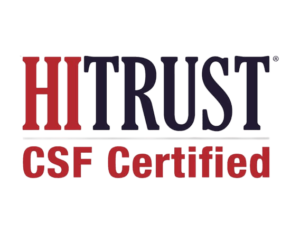
Gearing Up for AI Revolution – A Step-by-Step Guide to Business Readiness
- Artificial Intelligence
Byline by Chris Stephenson, alliantgroup Managing Director of Intelligent Automation & AI | benefitsPRO
If you have any questions about this article, please send us a message.
Artificial Intelligence captured the human imagination long before the current buzz. From Frankenstein to C3PO – fictional narratives have popularized and shaped our collective hopes, dreams, and nightmares about AI for centuries.
Yet, the impact of AI never felt real until generative AI models like ChatGPT were made available to the public. For the first time, we have an open, tangible, and comprehensive AI with endless possibilities. All that is left is for us to figure out how to use it to our advantage – what’s the real scope of AI for businesses, where does it fit within ongoing digital transformation, and how it can be implemented successfully.
Want to Embrace Artificial Intelligence – Where Do You Begin?
Whenever a new technology comes out, everyone tries to jump onto the bandwagon, either with a sense of inevitability or fear of missing out. It is happening right now with AI – “If you have a problem, we have an AI-powered solution.”
While the potential of AI is vast, how small- to mid-sized, non-tech business can successfully implement it effectively is still a big question. Instead of just blindly following the trend, business owners need to take a strategic approach that starts with an AI Discovery.
AI Discovery is a methodology where businesses identify AI use cases and opportunities, those use cases are then scored and prioritized based on several dimensions such as business impact, scalability, ease of adoption, and ROI, and then a roadmap is developed to strategically adopt or build the most impactful AI solutions. Discovery is the only way to make sure you are starting your AI journey the right way and that you’ll actually get a positive return out of it.
Below is a step-by-step guide that highlights some of the crucial steps of the Discovery process to help businesses navigate the AI landscape and integrate within their operations.
Step 1: Identify Areas of Improvement
For a business starting on this journey, rather than embarking on a full-fledged AI transformation across all business operations, find the areas where AI will have the most impact. Identify repetitive tasks that consume significant time, areas where enhanced data analysis could lead to better decision-making, customer touchpoints that could benefit from personalization, and operational bottlenecks that slow down productivity.
It often helps to employ an AI expert that can understand your major pain points and connect those pain point to an appropriate AI solution.
When we held our first digital workshop, we invited 150 CPA firms to participate. Our goal was to understand their daily operations, challenges, and how digital solutions could optimize processes, increase efficiency, and scale their operations.
This exercise revealed that manual data entry for tax returns was a major time for nearly every firm. We also identified client communication as an area that could be significantly improved, particularly during tax season when response times lag.
Step 2: Understand the Scope of AI and Its Capabilities
AI is currently being touted as an inevitable next step to business transformation. Most process-based tasks that require little human intervention can now be fully automated using AI. Despite these capabilities, it is essential to understand AI’s scope and limitations. It is not a one-size-fits-all solution, and it cannot be a substitute for human judgment in more critical situations. By understanding what AI can and cannot do and where it should be employed, you’ll be better equipped to integrate it effectively into your transformation strategy.
AI is best for repeatable predictable task where there are a low number of exceptions. Anything where human judgment is required can be a lot more difficult for AI’s to handle. That’s why its often better to have an AI assist in doing the work on a part of a process versus having it take on the whole thing.
The rise of generative AI has led to the emergence of numerous business models claiming to leverage AI for conducting studies for tax credits and incentives. While AI can undoubtedly enhance documentation and research processes, it currently lacks the capability to conduct a comprehensive study. Such studies require in-person communication with various stakeholders to thoroughly understand expenses and transactions, as well as human judgment to prepare accurate assessments. It’s crucial to exercise caution when considering AI-driven solutions for tax-related work.
Step 3: Find Small Quick Wins
One of the most significant misconceptions is the belief that businesses must overhaul their entire infrastructure to integrate and use AI. In fact, the most successful implementations start small. Smaller initiatives have less inertia to overcome, and their quick wins will make getting buy-in for larger projects easier.
Most companies have embarked on a digital transformation journey and they’ve found it to be a slow and expensive slog. The reason is because these projects usually require switching entire infrastructures and associated systems, upending long standing processes. The beauty of AI is that, in many cases, it can sit atop existing system, making adoption a lot smoother and easier. Finding use cases that is easily integrated with existing infrastructure reduces the risk of overspending, ensures your investments align with your business objectives, and lays the groundwork for future implementations.
One of our clients who participated in our digital workshop started small – implementing a pilot project with an AI-powered OCR tool for only a subset of their clients. They calculated that even a 20% reduction in manual data entry time would result in significant cost savings and allow their staff to focus on higher-value tasks. This solution also had the advantage of being able to leverage AI as a bridge to existing systems.
This allowed the firm to conveniently roll out the first phase of AI integration without majorly impacting the workflow. At the same time, the savings generated were used to launch the next phase.
Step 4: Cultivate a Digital Culture
Successful AI transformation cannot be actualized without fostering a culture of change within your organization. Businesses often overlook the importance of employee buy-in and training when adopting new technologies, especially AI. Employees must understand that AI is a tool designed to augment human effort, not replace it entirely. Additionally, as an integral component of internal systems and processes, employees must be brought in before development begins, not after the fact, to be included and empowered. This will reinforce a culture of adapting together.
We always begin our AI Discovery with ideation sessions that allow staff, not just managers, the opportunity to present AI solutions that they care about. This gets employees bought in immediately to whatever solution is deployed because they were in the selection process from the very beginning. Remember, they’re the ones that will be using it, and if they’re not on board they won’t use it.
Where are We Now? Where Do We Go From Here?
The AI revolution is not a one-time event but an ongoing process of businesses adapting to an ever-evolving technological landscape. Automation, AI, AGI, and more – the name and technology will keep changing with time, but what is essential is that your business is equipped and ready for it. It is not an option but a necessity. Businesses that embrace AI as a natural progression of their business transformation journey will be better equipped to adapt, thrive, and maintain a competitive edge in an increasingly digital world.
While a larger conversation around AI will continue, we at alliantDIGITAL are conducting personalized AI Discovery sessions for companies across every industry to ensure they are getting returns on their AI investments. If you are running a business and want to begin your digital journey, let’s discuss how we can help.
Featured Leadership

Mariano Novoa, Associate Director – Head of AI & Intelligent Automation, alliantDIGITAL
As alliantDIGITAL’s Associate Director and Head of AI & Intelligent Automation, Mariano develops customized AI products, working directly with our CPA partners to create and deliver solutions across their firms. Mariano has 10+ years of experience delivering automation and AI solutions for CPAs and the accounting industry at large, including several 100M+ technology transformations.
Prior to his time at alliantgroup, Mariano led Grant Thornton’s Intelligent Automation & AI Services Center, delivering 200+ solutions across front and back-office processes. Additionally, he was also recognized as Product Manager for the US Patent and Trademark Office’s Patent Search Product, focusing on moving legacy systems to a modern cloud. Through this work, he has won 2 American Business Awards, an HCM Excellence Award for best advancement.
Featured Leadership

Rob Lowe, Associate Director – Head of Product, alliantdigital
As alliantdigital’s associate director and head of product, Rob Lowe manages the daily operations of our digital practice along with developing our digital product roadmap, ensuring that our high standards of quality are maintained and clients are satisfied. Rob has worked in the digital sector for almost two decades, demonstrating his deep understanding how companies can best utilize emerging technologies, specializing in AI tools, large language models, and digital transformation.
Prior to his time at alliantgroup, Rob was the Head of Digital at Harte Hanks’, managing development teams across three continents overseeing a litany of digital projects for many companies, including Samsung, Microsoft, Toshiba, AB InvBev, Vodafone, and VMWare. This experience has allowed him extensive understanding of managing operations worldwide, ensuring seamless integration and timely delivery of products.

Is the gen AI bubble due to burst? CIOs face rethink ahead
With inflated generative AI expectations giving way to let-down, IT leaders should consider specialized models, more realistic targets, and other forms of AI.

IRS uses AI to close the tax gap
The Internal Revenue Service is turning to artificial intelligence to help select tax returns to audit and narrow the tax gap, but it needs to use this new technology consistently and transparently, according to a new government report.






